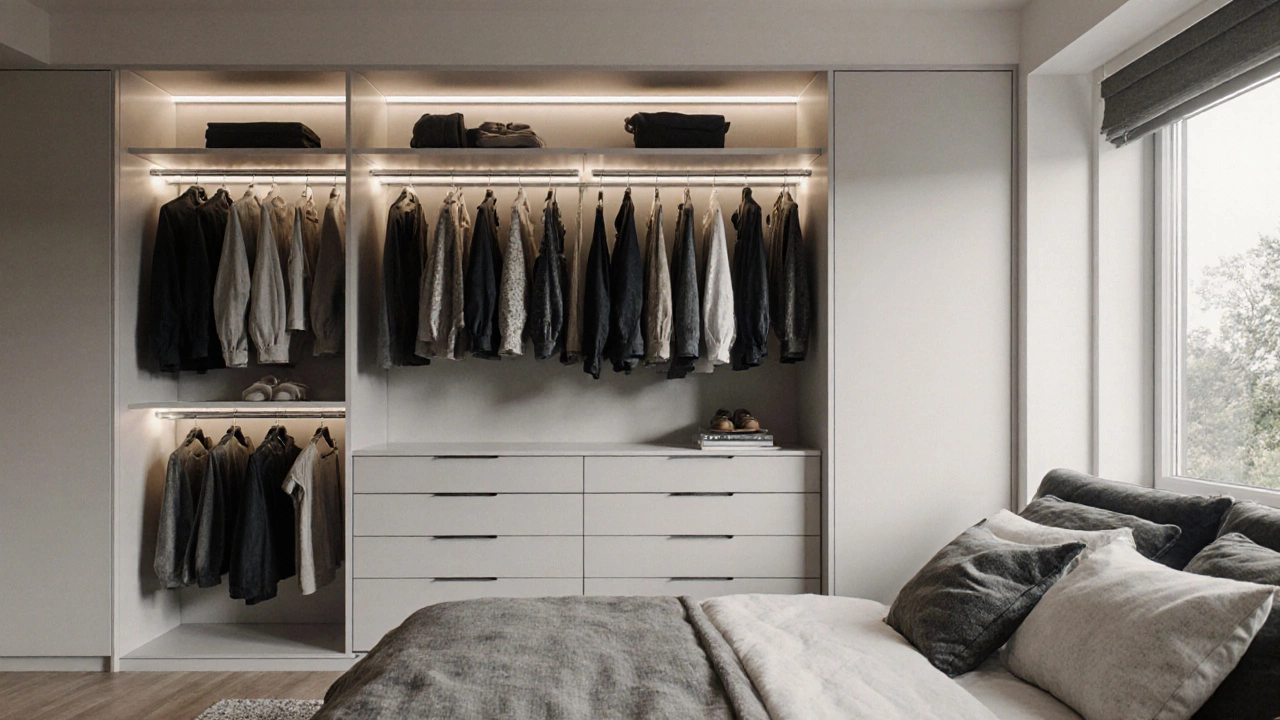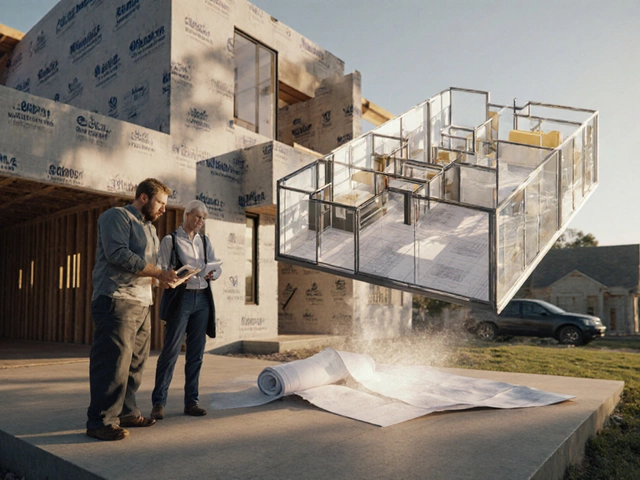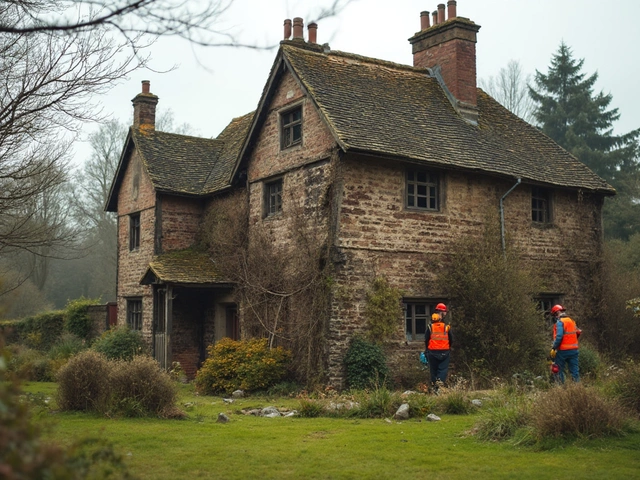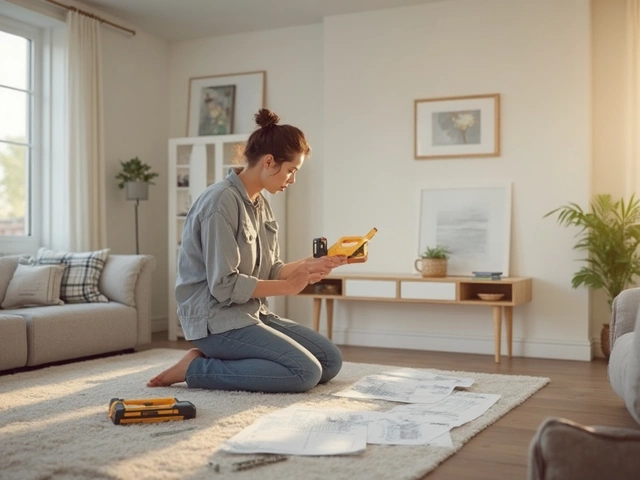Closet vs Wardrobe Checker
Which Term Should You Use?
This tool helps you determine whether you should say "closet" or "wardrobe" based on the type of storage you're describing.
If you’ve ever watched an American TV show or visited a home in the U.S., you’ve probably noticed people don’t call it a ‘wardrobe.’ They say ‘closet.’ And if you’re from the UK, Canada, or Australia, that might sound odd. Why don’t Americans say wardrobe? Is it just a word difference-or is there a real difference in the thing itself?
It’s Called a Closet in the U.S.
In the United States, the piece of furniture you use to store clothes is almost always called a closet. Not wardrobe. Not armoire. Closet. That’s the everyday word used in homes, real estate listings, home improvement stores, and even in rental agreements. If you walk into a bedroom in New York, Texas, or Seattle, and you see built-in shelves and hanging rods for clothes, the person showing you the house will say, ‘This is the closet.’
It’s not just slang. It’s the standard term. Real estate websites like Zillow and Redfin list ‘walk-in closet’ as a selling point. Home Depot sells ‘closet organizers’-not wardrobe organizers. IKEA’s U.S. site has ‘closet systems,’ not ‘wardrobe systems.’ Even in fashion magazines like Vogue or Elle, they refer to ‘my closet’ when talking about clothing storage.
Wardrobe Is Still Used-But Differently
That doesn’t mean Americans never say ‘wardrobe.’ They do-but not for the built-in kind. A wardrobe in the U.S. usually means a freestanding piece of furniture, like a tall cabinet with doors, hanging rods, and sometimes drawers. It’s more common in older homes, rental apartments, or as a decorative piece in a bedroom. Think of it like a big wooden cabinet you roll into place. You might find one in a vintage store or in a college dorm where there’s no built-in closet.
For example, if you’re shopping for furniture online and search ‘wardrobe,’ you’ll see products labeled as ‘freestanding wardrobe’ or ‘closet wardrobe.’ The term is still understood, but it’s not the default. It’s seen as a furniture item, not a room feature.
Why the Difference?
The reason comes down to housing history. In the U.S., homes built after the 1920s started including built-in closets as standard. Before that, people used freestanding chests and armoires. But as housing became more standardized during the post-WWII boom, builders began putting closets into every bedroom. They were cheaper than buying furniture, took up less floor space, and made homes feel more modern.
In contrast, in the UK and other parts of Europe, homes were often built with thinner walls and smaller rooms. Built-in closets weren’t practical. So people kept using freestanding furniture like wardrobes and armoires. The word stuck.
By the time American English became dominant in media and pop culture, ‘closet’ was already the norm. And since TV and movies shape how we talk, ‘closet’ became the word everyone learned.
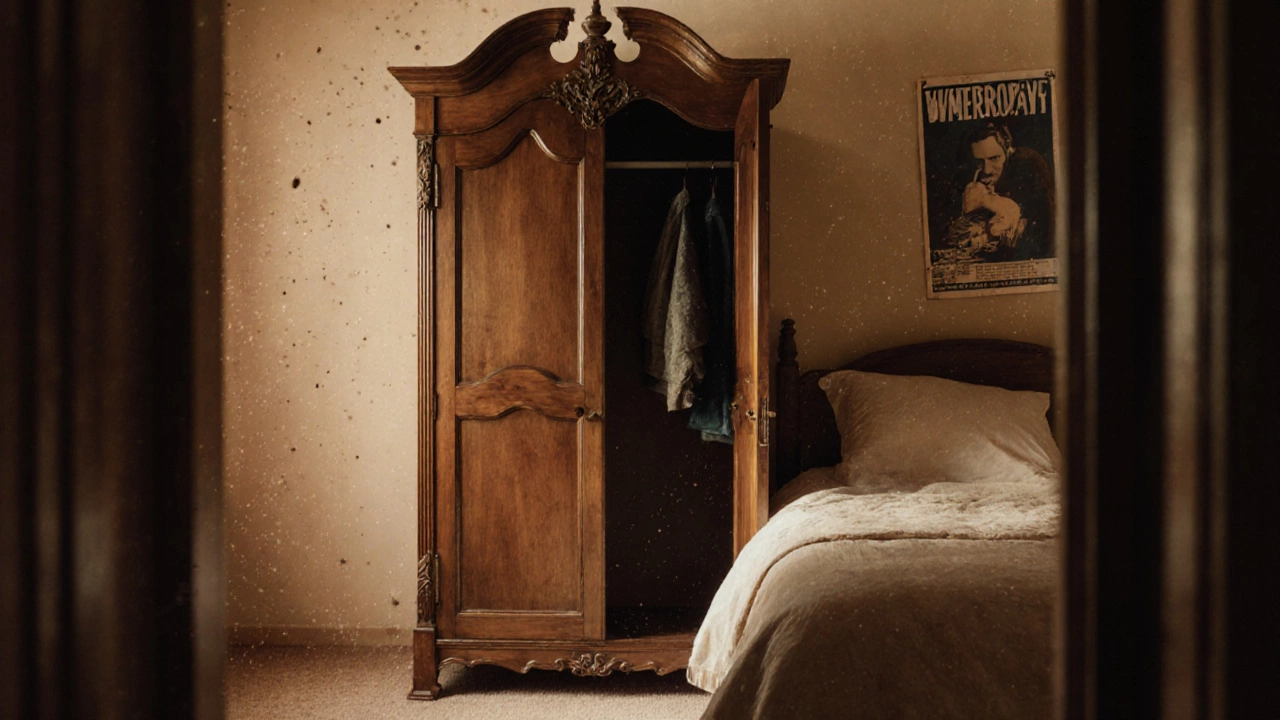
What About Armoires?
You might also hear the word ‘armoire’ in the U.S. That’s another type of freestanding storage cabinet, usually more ornate than a simple wardrobe. Armoires often have decorative carvings, glass doors, or mirrored fronts. They’re more common in formal bedrooms or as statement pieces. Some people use them as TV stands or linen storage-but if it’s meant for clothes, Americans will still call it an armoire, not a closet.
So here’s the simple breakdown:
- Closet = built into the wall, part of the house structure, no legs, usually not movable
- Wardrobe = freestanding, movable, bought as furniture, often wood or metal
- Armoire = fancy wardrobe, usually decorative, often used as a design piece
Real-Life Examples
Let’s say you’re moving to the U.S. and you’re packing. You’ve got a tall wooden wardrobe from your old apartment in London. When you get to your new apartment in Chicago, the landlord says, ‘There’s no closet in the bedroom.’ You panic-until you realize they mean there’s no built-in storage. You just need to put your wardrobe in the corner. No problem.
Or imagine you’re shopping for a new home. You find a listing that says, ‘3 bedrooms, 2 full baths, walk-in closet.’ That means the master bedroom has a room-sized storage area with shelves and rods built into the walls. You don’t need to buy anything extra. In the UK, that same space might be called a ‘walk-in wardrobe.’
And if you’re a designer? You’ll hear terms like ‘closet system’ or ‘custom closet.’ Companies like California Closets and The Container Store specialize in these. They don’t sell ‘wardrobe systems.’
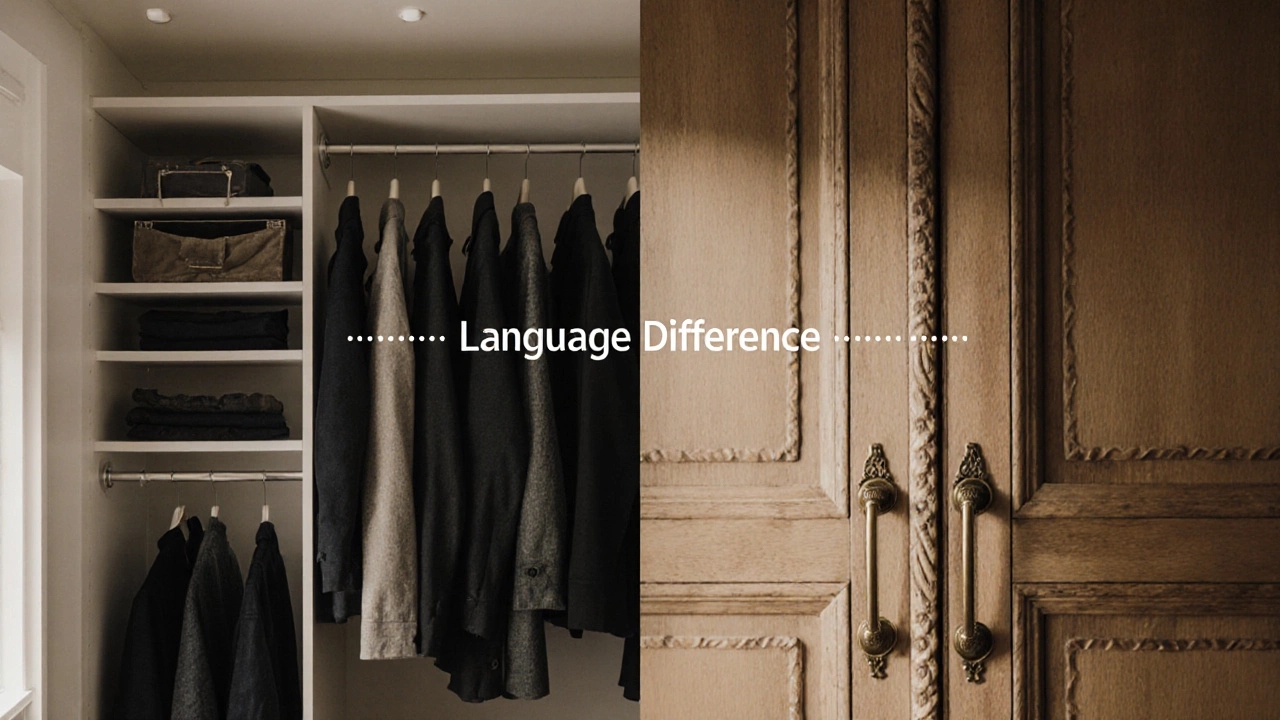
What If You Say ‘Wardrobe’ in the U.S.?
People will still understand you. But they might pause for a second. If you say, ‘I need a new wardrobe for my bedroom,’ they might picture a tall wooden cabinet, not the built-in kind. That’s not wrong-it’s just different. You’re describing a furniture item, not a structural feature.
For clarity, it’s best to say:
- ‘I need a closet organizer’ → if you want built-in storage
- ‘I need a freestanding wardrobe’ → if you want a piece of furniture
Using the right term avoids confusion, especially when shopping, renting, or hiring a contractor.
Does It Matter?
Yes, if you’re buying furniture, moving into a home, or talking to a real estate agent. If you ask for a ‘wardrobe’ in a U.S. store, you might end up with a big cabinet when you needed a built-in system. And if you’re listing a home for sale and say ‘wardrobe’ instead of ‘closet,’ you could lose buyers who expect the standard feature.
It’s not just about language. It’s about expectations. In the U.S., a closet is assumed. A wardrobe is optional. Knowing that helps you navigate homes, stores, and even conversations.
Bottom Line
The American name for wardrobe is closet-when it’s built into the wall. If it’s a standalone piece, it’s still called a wardrobe, but it’s seen as furniture, not part of the house. The difference isn’t just in the word-it’s in how homes are built, how people shop, and how spaces are designed.
So next time you hear someone say, ‘I need to organize my closet,’ don’t think they’re talking about a cabinet. They’re talking about the wall-sized storage space they’ve always had-and never had to buy.
Is a closet the same as a wardrobe?
No. A closet is built into the wall and is part of the home’s structure. A wardrobe is a freestanding piece of furniture you can move. In the U.S., ‘closet’ is the standard term for built-in storage; ‘wardrobe’ refers to a movable cabinet.
Do Americans use the word wardrobe at all?
Yes, but only for freestanding furniture. You’ll see ‘wardrobe’ on furniture websites, in vintage stores, or in dorm rooms. But in homes with built-in storage, people say ‘closet.’
What’s the difference between a wardrobe and an armoire?
An armoire is a type of wardrobe-usually more decorative, with carved details, glass doors, or mirrors. Wardrobes are simpler. Both are freestanding, but armoires are often used as design pieces, not just storage.
Why do American homes have closets instead of wardrobes?
After World War II, American home builders started including built-in closets as standard to save space and cut costs. They became a normal feature in new homes, so the word ‘closet’ stuck. Wardrobes were seen as old-fashioned or unnecessary.
Can I buy a wardrobe in the U.S.?
Yes. Stores like IKEA, Wayfair, and Target sell freestanding wardrobes. But you’ll need to search for ‘freestanding wardrobe’ or ‘closet wardrobe.’ Just saying ‘wardrobe’ might bring up results you don’t want.
